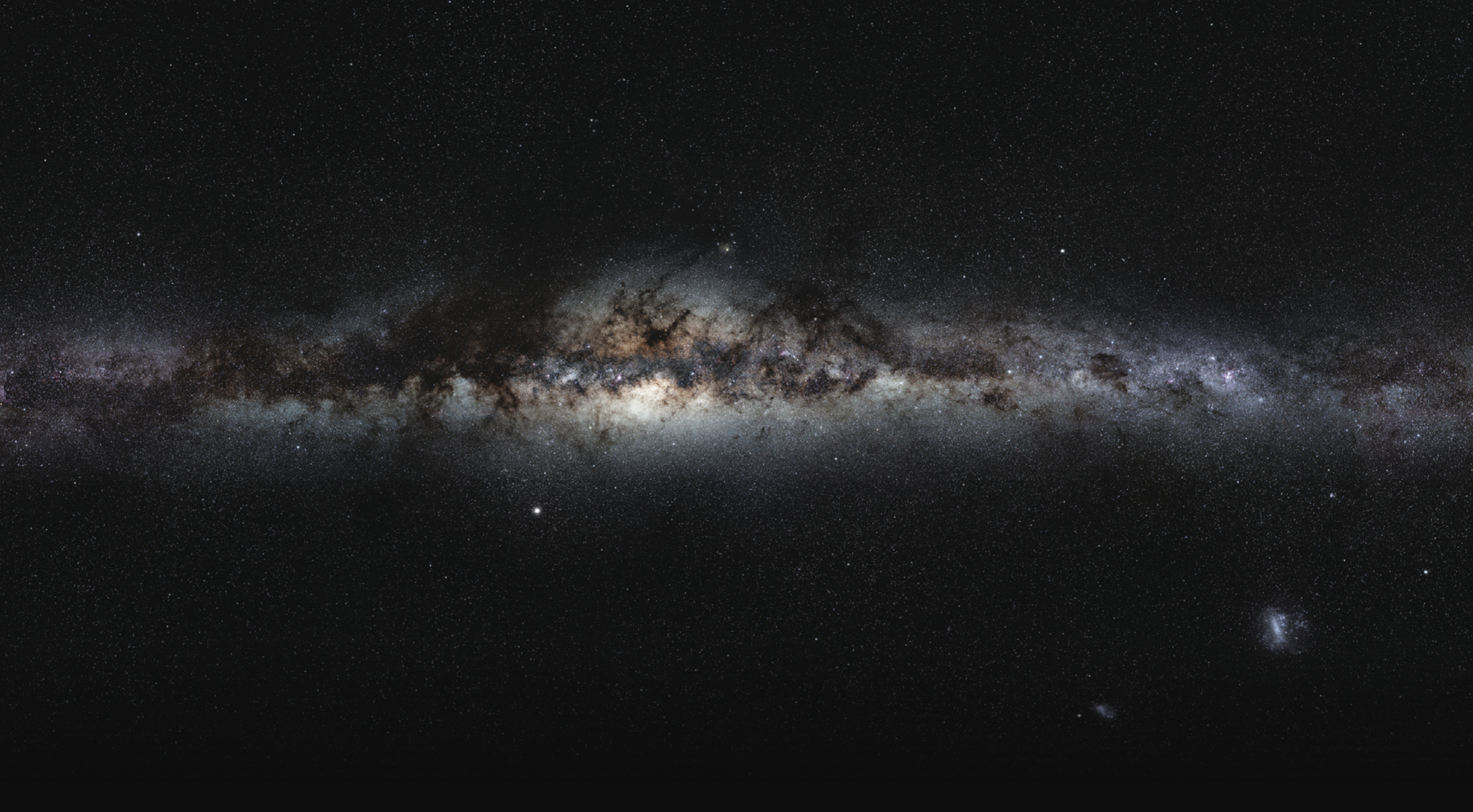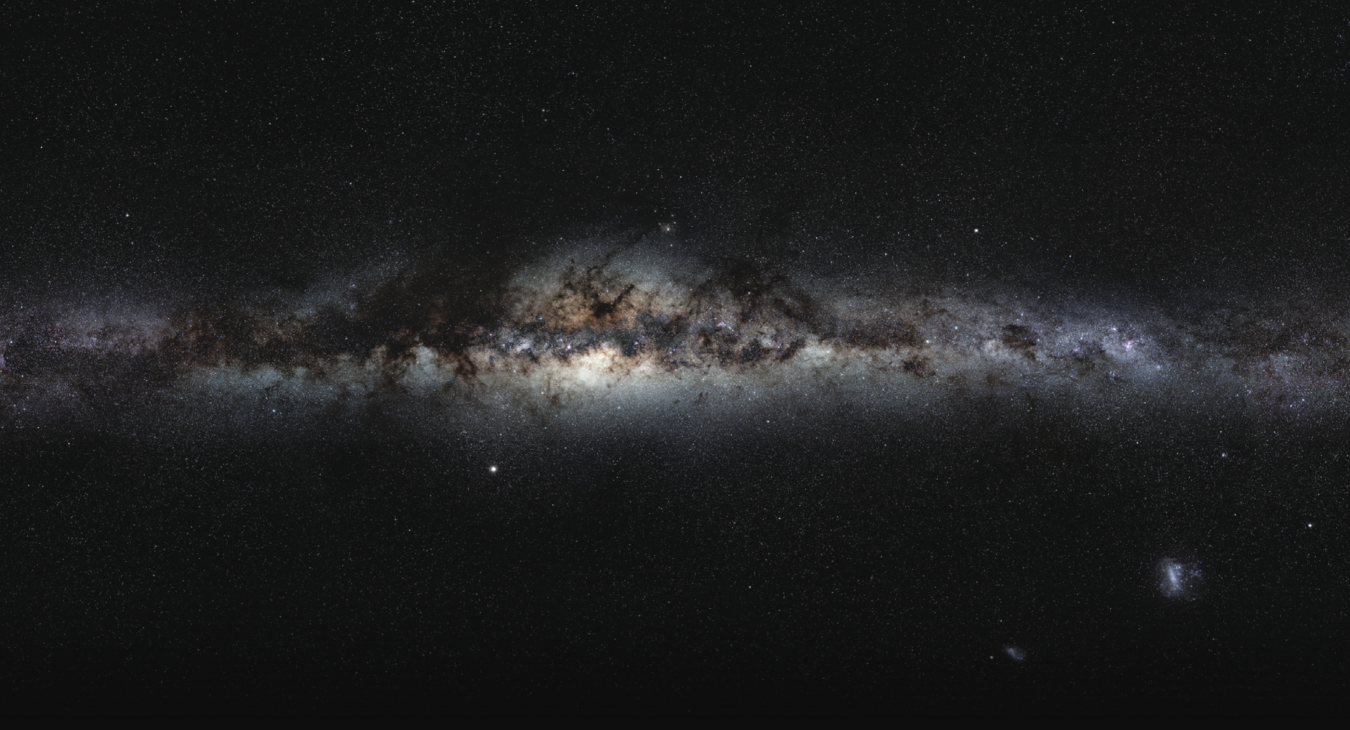The Galaxy Overhead
By Alan Hale
The Galaxy Overhead
A composite panoramic view of the Milky Way is photographed from the European Southern Observatory in Chile.
PHOTO COURTESY OF EUROPEAN SOUTHERN OBSERVATORY/SERGE BRUNIER
The red planet, Mars, has been visible in our evening skies for more than a year now, but it finally bids farewell this month. At the beginning of September, it sets around the end of dusk, and it continues to sink lower to the horizon during the following weeks. Just before midmonth, it can be found close to the bright star Spica.
Saturn is well-placed for viewing this month, rising during dusk and remaining visible throughout the night. It is at opposition—directly opposite the sun in the sky—Saturday, Sept. 20. Saturn is normally referred to as the ringed planet. However, the rings were presented directly edge-on to Earth earlier this year, and even this month, they are only inclined 2 degrees away from edge-on. Telescopes will reveal little beyond the planet itself, although some of Saturn’s moons can be detected with moderate-sized instruments.
The morning sky continues to present the best planet display, with Jupiter rising one to two hours after midnight and the brilliant planet Venus rising an hour or so before dawn. Mercury can also be seen low in twilight at the beginning of the month, but it disappears into the dawn within about a week.
There are two eclipses during September, although neither is visible from New Mexico. The total lunar eclipse Sunday, Sept. 7, can best be seen from Asia, Australia and eastern Africa, with the latter stages visible from the rest of Africa and Europe. The partial solar eclipse Sunday, Sept. 21, is primarily visible from the open waters of the southern Pacific Ocean, although it can also be seen from New Zealand, parts of Antarctica and some of the southeastern Pacific islands.
An interstellar comet, only the third-known visitor to our solar system from the outside galaxy, was discovered by a telescope of the ATLAS program in Chile at the beginning of July. It will be closest to the sun in late October and closest to Earth just after mid-December. It will pass close to Mars in early October. It could, conceivably, become bright enough to detect in larger backyard telescopes later this year.
That galaxy is easy to spot on September evenings. The hazy band of light we call the Milky Way is the combined light of countless distant stars spread across the plane of our galaxy. In September, it arches high across the sky from northeast to southwest, shining brightest in the south in the constellation Sagittarius, where our galaxy’s center sits.
From the Southern Hemisphere, Sagittarius passes almost directly overhead, presenting a dramatic view of the Milky Way—one we in the Northern Hemisphere will not be able to see.


